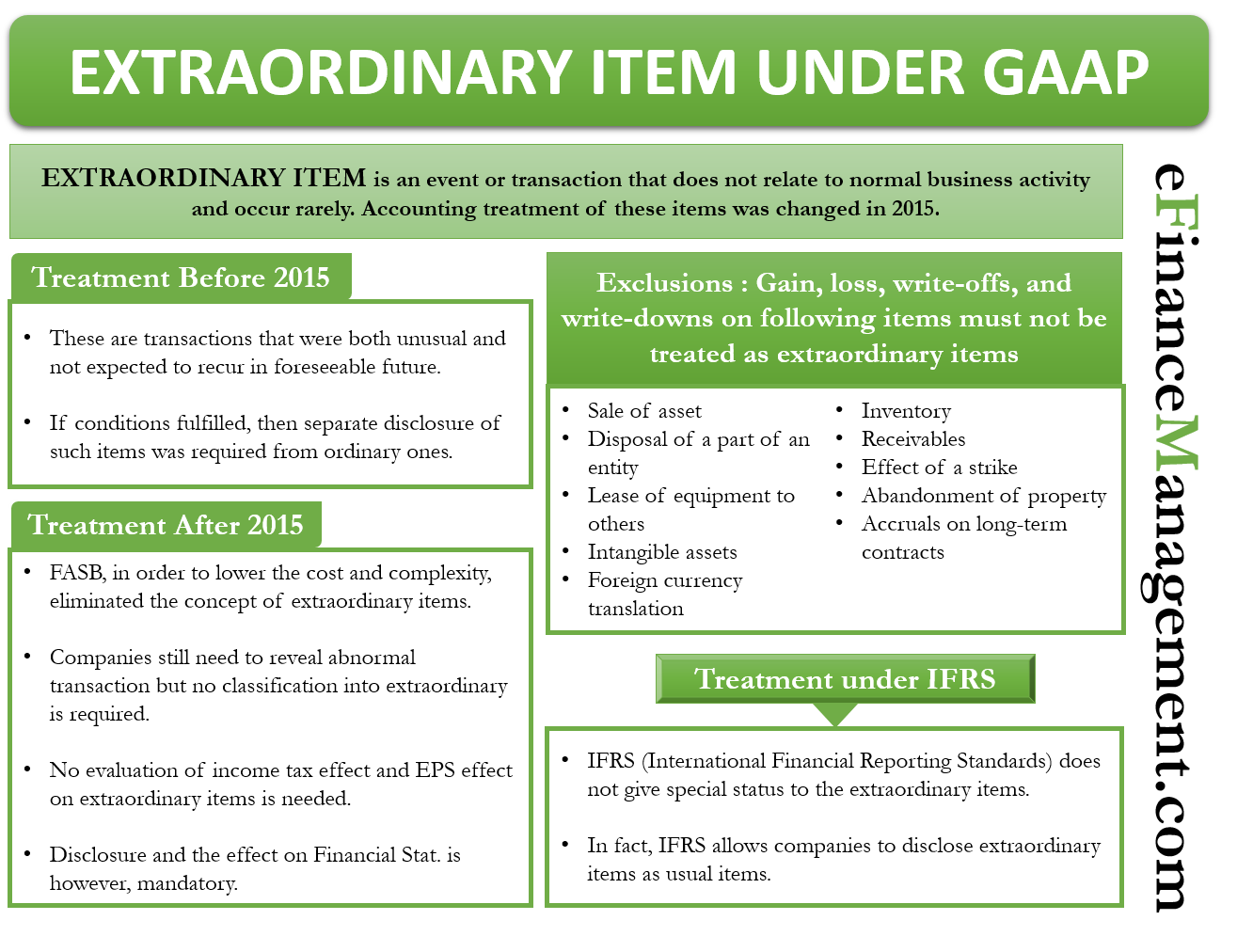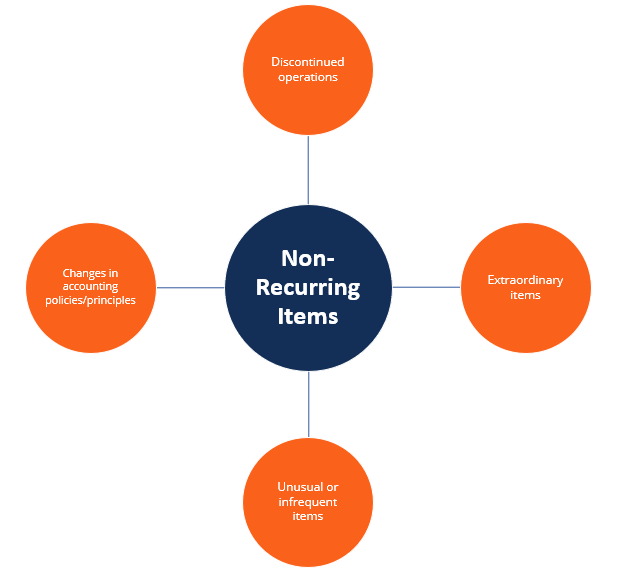


with retrospective effect after revision by Sixth Pay Central Commission)įrom the above, the following features of exceptional items can be deduced:

Legislative changes having retrospective application (e.g.Para 14 of AS 5 gives certain examples of such exceptional items: Amounts from writing off unamortized bond discounts, bond premiums, or bond issue expenses when the related debt is retired or refunded before maturity.Ī good definition of “exceptional items” can be: “Exceptional items are defined as those items that in management’s judgment are material items which derive from events or transactions that fall within the ordinary activities of the Group and which individually or, if of a similar type, in aggregate, need to be disclosed by virtue of their size or incidence.”.Losses from completely writing off intangibles, such as goodwill or trademarks and.Losses from disasters not commonly insured against (e.g., wars, riots, and earthquakes), unless such losses are a recurrent business hazard.Amounts resulting from unusual sales of assets not of the type in which the company commonly deals.Nonrecurring amounts specifically related to prior years’ operations, such as eliminating previously established retained earnings reserves or adjusting past income taxes.1–42, in 1953, the following items, when material, were specified as allowed to be excluded from net income if the inclusion would cause users to draw misleading conclusions from an analysis of net income: When the AICPA published ARB 43, Restatement and Revision of Accounting Research Bulletins Nos. The income statement simply indicated to users that income or loss for the period had been determined excluding extraordinary items. Often there was little, if any, disclosure of what constituted an extraordinary item, and accountants tended to view these in a “rather liberal” manner (Weldon Powell, “Extraordinary Items,” Journal of Accountancy, January 1966). In the 1920s, however, extraordinary items were typically accounted for directly in the retained earnings (or surplus) account. This pamphlet was reissued the following year as “Approved Methods for the Preparation of Balance Sheet Accounts.” These statements recommended an income statement that showed extraordinary gains and losses on its face after determination of net income for the period. The first document mentioning the term, “Uniform Accounting,” was issued in 1917 by the Federal Reserve Bank, but prepared by an AICPA committee. Discussion of extraordinary items (EI) is not new.


 0 kommentar(er)
0 kommentar(er)
